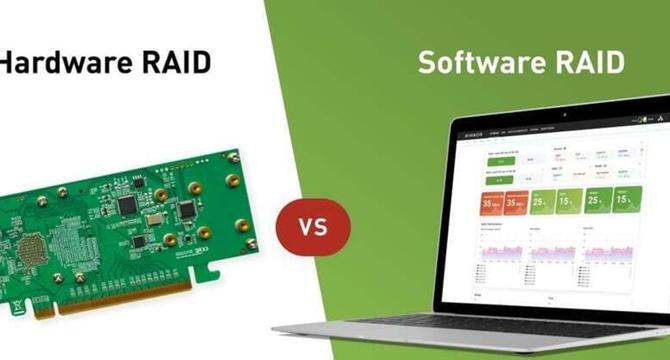Dev
1M
9

Image Credit: Dev
Software OR Hardware Raid: What's Better In 2024?
- RAID (redundant array of independent disks) technology combines multiple disk drives into arrays to improve performance and data reliability by spreading data and adding parity or mirroring.
- Challenges faced by RAID in 2024 include decreased reliability with larger HDDs, complexities with NVMe drives due to computational requirements, and issues with network-connected NVMe drives.
- Hardware RAID controllers offer features like SAS drive support, external ports for flexibility, and write cache with battery backup, but can be limited in NVMe implementations by IOPS capabilities and PCIe bandwidth.
- Software RAID provides host flexibility, is OS-specific, uses CPU and RAM resources, and offers features such as working with various storage devices, but may face performance issues with NVMe drives.
- Pros of hardware RAID include cross-OS compatibility and reliable performance for HDDs, while cons include added latency and limited firmware updates.
- Pros of software RAID include hardware-agnosticism and flexibility, but cons include OS specificity and utilization of host resources.
- For SATA installations, onboard RAID or volume managers suffice, while SAS drives benefit from hardware RAID adapters. For NVMe under Linux, xiRAID is recommended for performance and flexibility.
- In conclusion, the choice between software and hardware RAID in 2024 depends on specific use cases, with considerations like drive types, operating systems, and performance requirements.
Read Full Article
Like
For uninterrupted reading, download the app